I have four books in process or about to be released. They are:
The Battle for Kyiv:
– UK release date: 28 November
– U.S. release date: 18 January 2024
Aces at Kursk:
– UK release date: 30 January 2024
– U.S. release date: posted as 18 January 2024, but suspect release date will be in March 2024.
Hunting Falcon:
– UK release date: 28 February 2024
– U.S. release date: posted as 29 February 2024, but suspect released date will be in April 2024.
The Siege of Mariupol:
– UK release date: sometime in 2024
– U.S. release date: sometime in 2024
Books under consideration for 2024/2025:
– The Battle for the Donbas
– The Battle of Tolstoye Woods (from the Battle of Kursk)
– More War by Numbers

Excellence in Historical Research and Analysis

Excellence in Historical Research and Analysis
Category World War I
Three books to be published this year

I have been quiet about the books that I am working on and publishing because some of them have been slower to release than expected.
I have three books coming out this year. The UK hardcover release dates are:
Aces at Kursk: 30 July 2023
The Battle of Kyiv: 30 August 2023
The Hunting Falcon: 30 September 2023
The U.S. hardcover release dates according to Amazon.com are:
Aces at Kursk: 30 September 2023
The Battle of Kyiv: 30 October 2023
The Hunting Falcon: 31 October 2023
So for a brief moment in time I will be pumping out a book a month. I am currently working on two other books (they might be released in 2023) and I have one other listed on Amazon.com (UK) called “The Other Battle of Kursk” with a release date of 16 July 2024. This is the book “The Battle of Tolstoye Woods.” This has been discussed with the publisher and I may get it published in 2024.
Of course, the only way one gets a book done is to ignore everything else. If some people feel I should be responding in a timely manner to their emails or requests, there is a reason I have not been. Sorry. Three books coming out in one year is evidence that there is some validity to that.
Some relevant links related to Aces at Kursk:
Aces at Kursk – Chapter Listing | Mystics & Statistics (dupuyinstitute.org)
Aces at Kursk | Mystics & Statistics (dupuyinstitute.org)
Is this my last Kursk book? | Mystics & Statistics (dupuyinstitute.org): The answer is no. I will be working on (and maybe completing) The Battle of Tolstoye Woods in 2024.
145 or 10? | Mystics & Statistics (dupuyinstitute.org)
So did Kozhedub shoot down 62, 64 or 66 planes? | Mystics & Statistics (dupuyinstitute.org)
5th Guards Fighter Regiment, 7 July 1943 | Mystics & Statistics (dupuyinstitute.org)
The 728th Fighter Regiment on 16 July 1943 | Mystics & Statistics (dupuyinstitute.org)
Soviet versus German kill claims at Kursk | Mystics & Statistics (dupuyinstitute.org)
So What Was Driving the Soviet Kill Claims? | Mystics & Statistics (dupuyinstitute.org)
Aces at Kursk – Chapters | Mystics & Statistics (dupuyinstitute.org)
And related to The Battle for Kyiv: most of this blog from December 2021 through April 2022:
December | 2021 | Mystics & Statistics (dupuyinstitute.org)
January | 2022 | Mystics & Statistics (dupuyinstitute.org)
February | 2022 | Mystics & Statistics (dupuyinstitute.org)
March | 2022 | Mystics & Statistics (dupuyinstitute.org)
April | 2022 | Mystics & Statistics (dupuyinstitute.org)
And related to Hunting Falcon:
Award Dates for the Blue Max (1916) | Mystics & Statistics (dupuyinstitute.org)
Video of Infantry Fighting near Bakhmut
This video has been floating around for a few days. It is worth watching. More 1916 than RMA. This is fighting outside of Bakhmut on the route into the town. There are pictures of people being shot in this video.
A few observations:
- 0:44: One Ukranian soldier has been killed “Norman.”
- 1:08: Grenade attack?
- 1:30: first JRR Tolkien reference.
- 1:37: second JRR Tolkien reference.
- 1:56: grenade being thrown.
- 2:30: three clear targets
- 2:40: clip change
- 2:50: shooting continues
- 3:34: Another Tolkien reference.
- 3:38: Other people deployed
- I see that three Russians have been killed so far. Looks like all were done by one man, “Tikhey”
- 5:35: instructions to preserve ammo.
- 5:38: wounded Russian
- 6:24: Another clip change
- 6:31: incoming mortar fire
- 7:14: Two more Russians engaged.
- 7:44: It is claimed Russian is killed.
- 9:02: Close in mortar hit
- 10:10: One person is reported wounded.
- 10:26: “Normans” magazines have been used.
These are the Da Vinci Wolves: Da Vinci Wolves | MilitaryLand.net. The “Right Sector” is a far-right Ukrainian nationalist organization (see: Right Sector – Wikipedia). They currently hold no seats in the Ukrainian parlament (the Rada).
Other similar videos:
Ukrainian soldiers take Russian trench in terrifying POV footage from Bakhmut – YouTube
First video as annotated by The Telegraph: Ukrainian soldiers fight off Russians in battle for Bakhmut – ‘Orcs jumped into our trenches’ – YouTube
Award Dates for the Blue Max (1916)
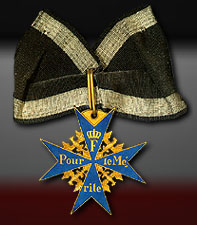
Still sidetracked somewhat on the Great War air research. Sorry if this does not hold the interest of many of you. I have been examining the list of the first German aviators who received the Pour le Merite, commonly called the Blue Max, named after its first recipient, Max Immelmann. A total of 13 pilots were awarded the Blue Max in 1916. These first recipients are (name, number of victories, dates, date of death, age, and any notes):
1. Max Immelmann (8): 12 January 1916, KIA 18 June 1916 (25)
2. Oswald Boelcke (8): 12 January 1916, KIA (mid-air collision) 28 October 1916 (25)
3. Hans-Joachim Buddecke (7): 14 April 1916, KIA 10 March 1918 (27)
4. Kurt Wintgens (8): 1 July 1916, KIA 25 September 1916 (22)
5. Max Ritter von Mulzer (8): 8 July 1916, KIA 26 September 1916 (23)
6. Otto Parschau (8): 10 July 1916, KIA 21 July 1916 (25)
7. Walter Hoehndorf (8), 20 July 1916, Crashed 5 September 1917 (24)
8. Ernst Freiherr von Althaus (8): 21 July 1916, died 1946 (56)
9. Wilhelm Frankl (6 or 9): 16 July 1916 or 12 August 1916, KIA (wing failure) 8 April 1917 (23) – Jewish, converted to Christianity in 1917.
10. Rudolf Berthold (8): 12 October 1916, killed in Kapp Putsch 15 May 1920 (28)
11. Gustav Leffers (8): 5 November 1916, KIA 27 December 1916 (21)
12. Albert Dossenbach (9): 11 November 1916, KIA 3 July 1917 (26) – two-seater pilot at time of award
13. Hans Berr (10): 4 December 1916, KIA (mid-air collision) 6 April 1917 (26)
I believe that these are all the airmen that had been awarded the Blue Max in 1916. Of those, 11 died during the war, one died violently shortly after the war, and only one died of natural causes.
According to website The Aerodrome, 81 German military aviators were awarded the Blue Max. 76 army aviators and 5 naval aviators. They also provide a listing of the 62 German aces who won it. A total of 687 Pour le Merite were awarded during the Great War.
Let me know if there is anything I have missed in this listing. Note that I have two different dates given for when Wilhelm Frankl was awarded the Blue Max.
Rickenbacker at Narragansett Park Speedway – 1915

On September 18, 1915 Eddie Rickenbacker (America’s top ace in the Great War) won the 100 mile race at Narragansett Park Speedway in Providence, Rhode Island. It was his third win that year.
One internet lap board has his lap leader breakdown as (100 one-mile laps):
Eddie Rickenbacker in a Maxwell: leads laps 1-36
Ralph DePalma in a Stutz: leads laps 37-44
Bob Burman in a Peugeot: leads laps 45-63
Ralph DePalma: leads laps 64-76
Eddie Rickenbacker: leads laps 77-100
See: https://www.racing-reference.info/race-results/1915_Providence_Race/UO/
On the other hand, The Boston Sunday Globe dated September 19, 1915, page 15, has a slightly different account. It says:
“He {Rickenbacker] shot into the lead on the first lap, but was crowded back into third place before the second mile ended. There he held his place watching the speed of the others and always within 50 feet of the leader.
But he had to stop in the 15th lap. He had some carburetor trouble, it was stated. Before he got going the leaders had passed around three laps. So it seemed if it was all over for him…
Rickenbacker cut loose, however, and very soon it was apparent that the little car with 1 on its radiator was coming around very frequently. First it was noticed that it had regained the laps lost to the end of the field. Then when 33 miles had been covered he had won back a lap, the leaders being 33 and Rickenbacker 31….
De Palma had the lead in the 37th mile and from that to the 57th, or a distance of 30 miles, he kept in the van. But every time he and Burman made a mile in 54 or 55 seconds Rickenbacker did it about 50 or under. So he continued to cut down the lead. Before 50 miles had been reached he had circled all the other again and so they were then but one mile ahead of him.
Burman then began to show signs of speed and to tear away from De Palma, having passed into first place on the 58th mile. And each mile, while he was leaving De Palma behind, Rickenbacker was gaining on him. The spectators then began to sit up and shout. And the shouting encouraged Rickenbacker, for he smiles and let his motor car roar its way a little faster.
When 60 miles had been reached, he was swinging around the upper curve with an abandon that seemed reckless, for he appeared to handling the car like a toy. It would whirl around and the rear wheels would start for the sky or the upper edge of the track only to get yanked back like an unruly horse that shied at a street car.
Then it would roar down the track with the driver laughing and nodding to his pit attendants, who help up blackboards telling him how fast he was going, his position, etc. Having evened up matter, it was then his plan to get the lead. De Palma was the first he went after, and when he had swung over the line on the 72nd mile and the cars tore around the first quarter, Rickenbacker went into second place.
It was now Burman only that separated him from first place. Then the real race began. One hardly realized that the Maxwell had passed when it was around again. It came so fast that people mistook it for some other car, and they asked where it was, no knowing it passed. A few times Rickenbacker was pocketed by some of the others, and to see the way he wiggled through without slower up was amazing.
When the cars came swinging down for the 73rd mile it was seen that Rickenbacher was closing up on Burgamn. The passed over the line five seconds ahead. There was no question then of the outcome, it seemed. On the next lap they tor down side by side and it seemed was if Rickenbacker was playing with Burman.
They crossed the line with Burman four feet in the lead. For two more laps they swung around side by side and then, entering the 77th miles, Rickenbacker seemed to infuse new life into the his car, and he got into the lead. When he went over the line on that mile he was nine seconds ahead of Burman…
So as it neared the 100 mile every one was resigned to Rickenbacker’s win. And he crossed the line amid a great ovation, with 1 minute and 1 second to spare. Burman finished second, Haupt third, De Palma fourth.”
So, the “race results” internet site only agrees with the newspaper report given at that time on lap 1, laps 37-44, laps 58-63, and laps 77-100. For the majority of the laps, they differ as to who was leading.
Note: The paper refers to him as Rickenbacker, although at this time he spelled his name Rickenbacher.
Two Different Accounts of the Same Air Battle – part 2 of 2

And then Boelcke’s letter continues, clearly referring to events on the same day (from same paragraph that says “on the 9th…”):
“The French were very cross with us about that; when the pair of us arrived at the front in the evening for a peaceful bit of hunting, practically all the French aircraft in the neighbourhood went for us. And suddenly those fellows really got megalomania and attacked me; among the assailants was a new type of biplane (with a cockpit and very fast). They appeared to be very astonished that we calmly let them attack us — on the contrary we were very pleased to run up against someone who didn’t bolt at once. After several futile attacks they retired, but we–being far from lazy–went after them, and each of us forced an enemy machine down in a glide.
As it was fairy late, we were satisfied with this success and flew off, side by side, in the direction of Douai [their home airfield]. But when I happened to look round, I saw two other machines circling about behind their lines. As I did not want to give our people in the trenches the impression that we were bolting, I signalled to Immelmann that we would fly round a couple of times, just to show that we were cock of the walk. But Immelmann misunderstood me and attacked one of the Frenchmen (Farman type, without a cockpit), who was not going to be drawn into a fight and so sheered off. But while Immelmann was busy with the Farman, the other Frenchman (a Morane-Saulnier Biplane) swooped down on him from behind. So then I had to turn back to help Immelmann, who could not see the second French machine. When the Morane saw me coming up, he turned round to meet me, I peppered his nose a bit, so that he got in a funk and turned back. That was his greatest mistake. I sat on his neck, and as I hung on and came up fairly close–up to fifty metres–it was not long before I hit him. I must have mortally wounded the pilot–suddenly he threw up both his hands and the machine went down vertically. I watched it fall, and saw it turn over a couple of times and crash about four hundred metres in front of our trenches. Our people ascertained that it was smashed to bits and both inmates dead.
Meanwhile it had grown fairly late and was high time for us to fly home, especially as our petrol was running out. Finally we had to land about eight hundred metres in front of our aerodrome; as the corn had already been cut, we succeeded in making good landings in spite of the growing darkness.
There was much joy in the section over my new victory. Our infantry had already rung up from the trenches to announce the crash…”
Now Immelmann’s letter of 11 September;
“The following day [which would be the 10th] I forced two enemy aircraft to land. Boelcke joined in the fight with the second one.
We signalled to each other to fly home, because it was already dusk. Suddenly I saw an enemy biplane attack Boelcke from behind. Boelcke did not seem to have seen him.
As if by agreement, we both turned round. First he came into Boelcke’s sights, then into mine, and finally we both went for him and closed up on him to within 50-80 metres. Boelcke’s gun appeared to have jammed, but I fired 300 rounds. Then I could hardly believe my eyes when I saw the enemy airman throw up both his arms. His crash helmet fell out and went down in wide circles, and a second later the machine plunged headlong into the depth from 2,200 metres. A pillar of dust showed where he hit the ground.
So then home. It was almost dark. Flares were burning when we reached our aerodrome, we could see nothing of the aerodrome itself. Suddenly my engine stopped–run out of petrol. So a forced landing. I made a smooth landing in the darkness, climbed out and looked round for Boelcke. He had been flying behind me. Nothing to be seen of him. Finally–he had he same bad luck. Ran out of petrol and made a forced landing. We were welcomed with congratulations on all sides, for everyone had watched the fight and the crash which ended it through their field-glasses.”
So:
From Immelmann’s account:
- Immelmann victory on the 9th?
- 2nd Immelmann victory on the 10th?
From Boelcke’s account:
- Just a single Boelcke victory on the 9th or 10th?
- If Immelmann did shoot down a plane on the 9th or the 10th, which one was it?
By the way, with modern text messaging, emails, and tweets, will we be able to preserve these type of accounts of what happened in combat like they did with letters?
Two Different Accounts of the Same Air Battle – part 1 of 2

On 9 September 1915, both Oswald Boelcke and Max Immelmann are credited with a kill, the 3rd kill for Boelcke and the 2nd for Immelmann. According to the Aerodrome website, Boelcke shot down a Morane two-seater in the P.M. at French lines. Immelmann shot down a biplane. We gather these claims are drawn from Norman Franks books.
See:
http://www.theaerodrome.com/aces/germany/boelcke.php
Max Immelmann (theaerodrome.com)
Now, I do have letters from both pilots that discuss these air battles. Unfortunately, they do not agree (bolding is mine).
From Boelcke’s letter dated 18 September 1915:
“On the 9th, we succeeded in getting on either side of huge French fighting machine, so that it did not know what to do and only escaped us by a hasty dive.”
From Immelmann letter dated 11 September 1915:
“Only yesterday and the day before yesterday it was different. I forced an artillery flier down. At first there were three enemy fighters in the neighbourhood, but after a while only me. The machine was a huge thing, with two engines and two machine guns; it was 3,400 metres up and I was 3,200. I therefore screwed myself up a bit higher on our side of the lines, and crossed when I reached 3,400.”
“Suddenly I caught sight of Boelcke, who wanted to attack, but was much lower. He followed me. After I had fired 100 rounds, the enemy began to go down. Then Boelcke was able to attack him as well. The enemy as now between two fires; he went down in a series of very risky turns. He could not escape us.”
“After I had fired 250-300 round he made a hasty landing. Unfortunately he succeeded in reaching his own ground. Meanwhile we had come down to 1,900 metres, and it was pitch dark. So home! When we landed, we found they knew all about our success. Someone had telephoned that two Fokkers had shot down an enemy fighter.”
This story continues….
Warbirds Over the Beach Airshow 7 (final Great War pictures)
In early October I spent the weekend in Virginia Beach at the “Warbirds Over the Beach” airshow. This seventh post on the air show include some more Great War airplane pictures that I took and a few other pictures taken by others. It will be my last post of Great War airplanes for now.
This is a replica of SE-5a. One of the better allied fighters in the war (5205 built). It usually had one cowling mounted machinegun and one Lewis gun mounted on the upper wing.
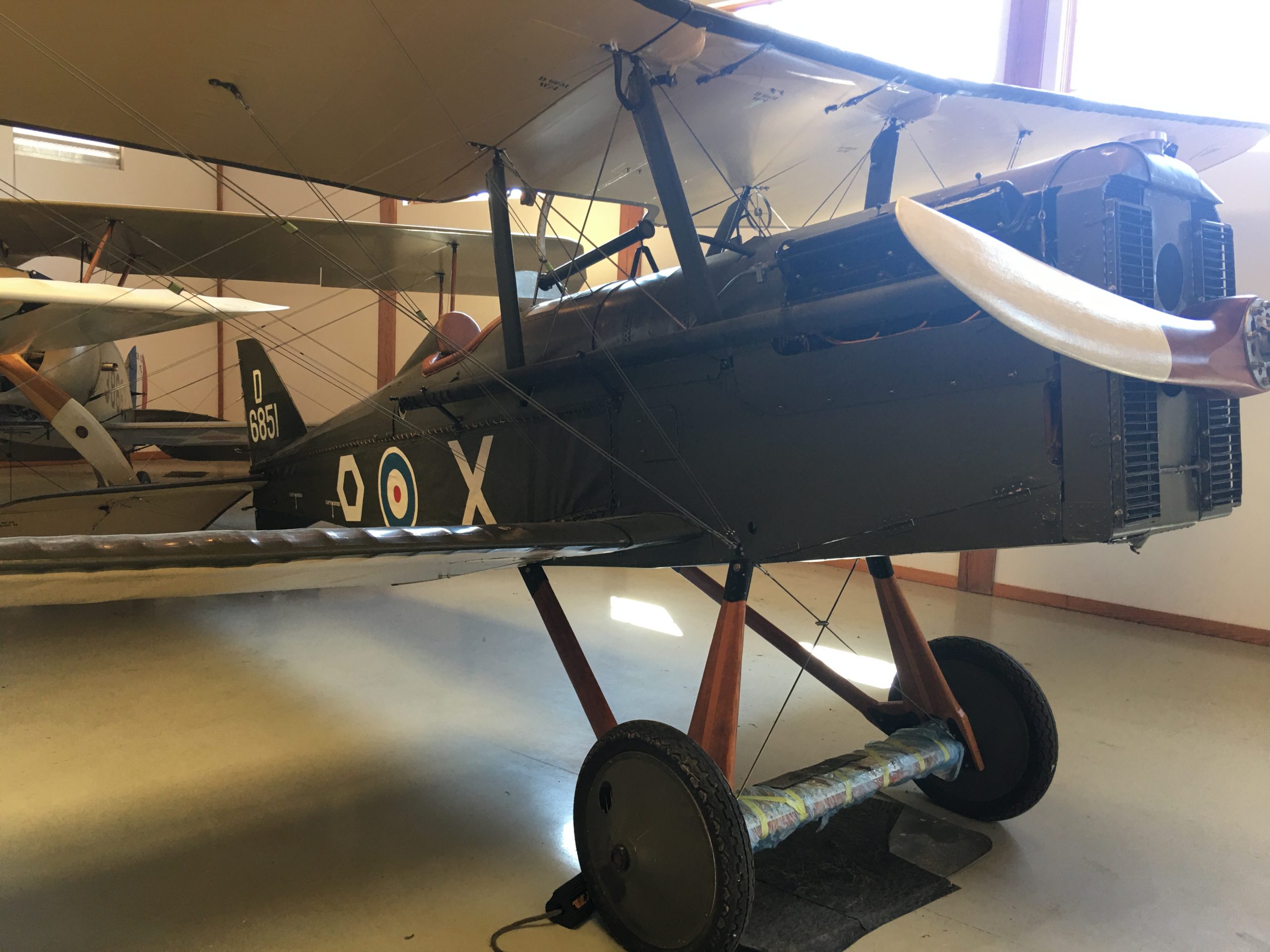


There are videos of it taxiing here: https://aerodynamicmedia.com/taxi-tests-underway-for-military-aviation-museums-new-s-e-5a-video/
I forget what this plane is. Anyone recognize it?

This is an Albatros DVa. The Germans spell ‘Albatross’ with one ‘s.’
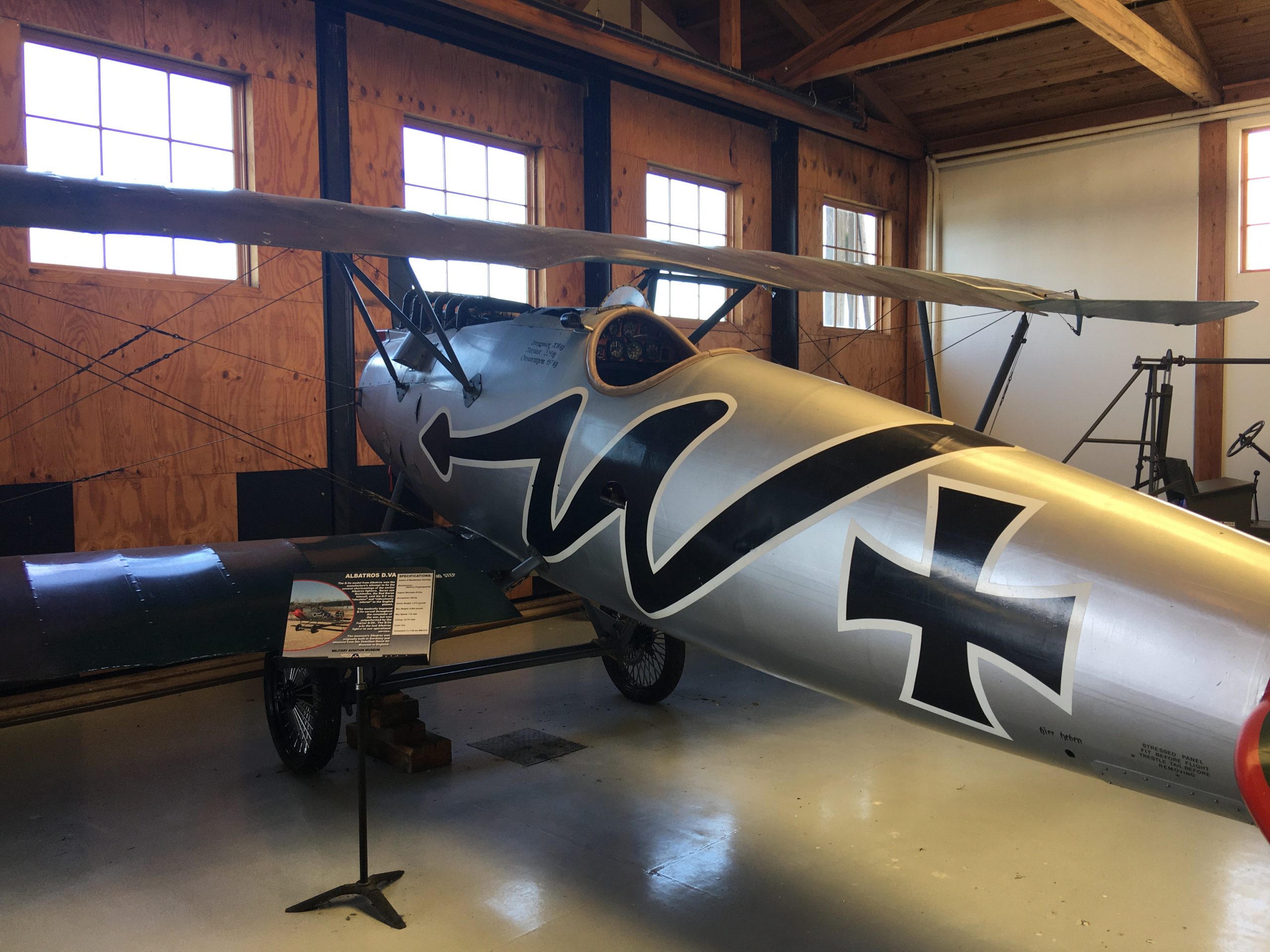
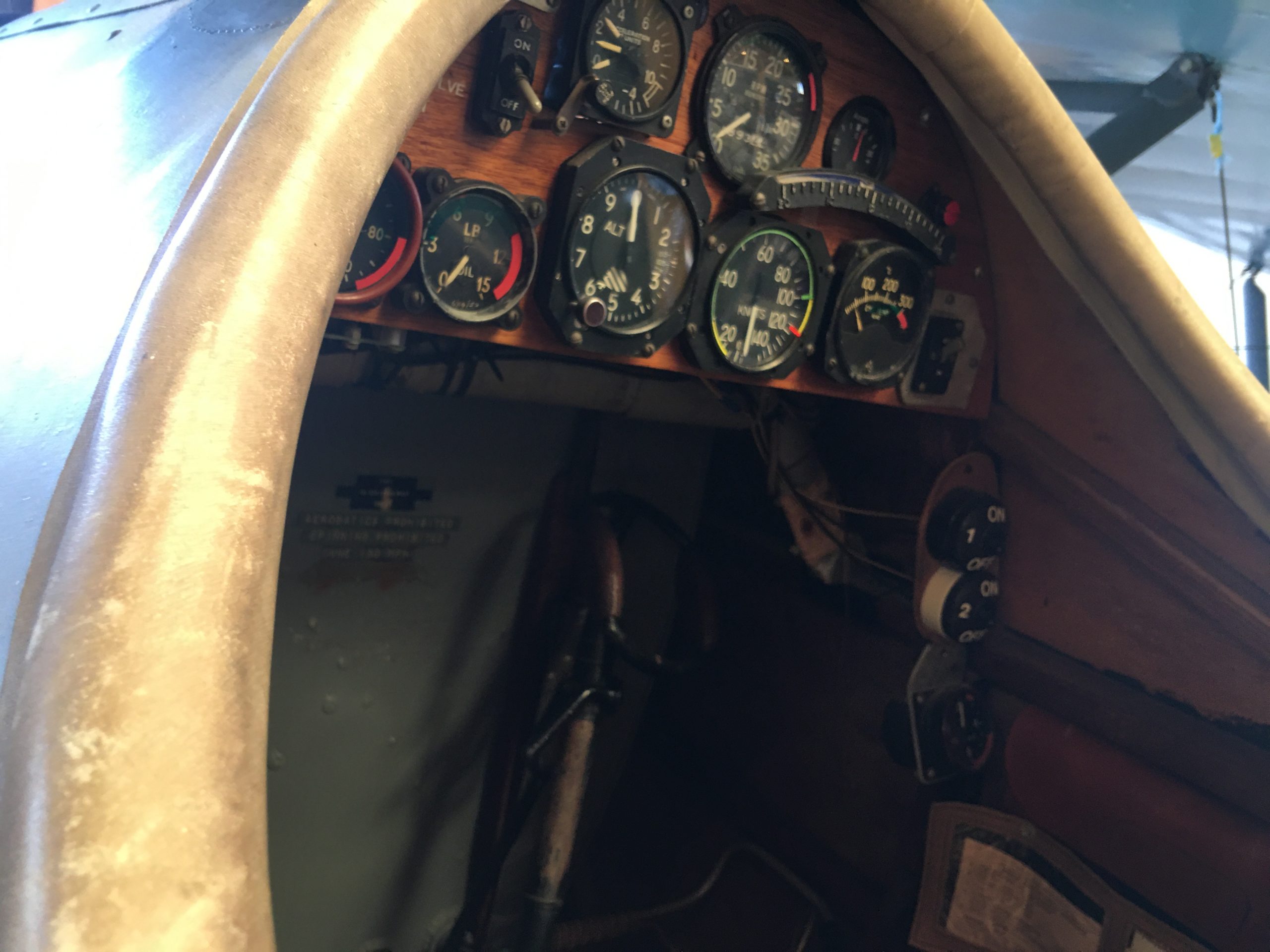
Nice period piece:
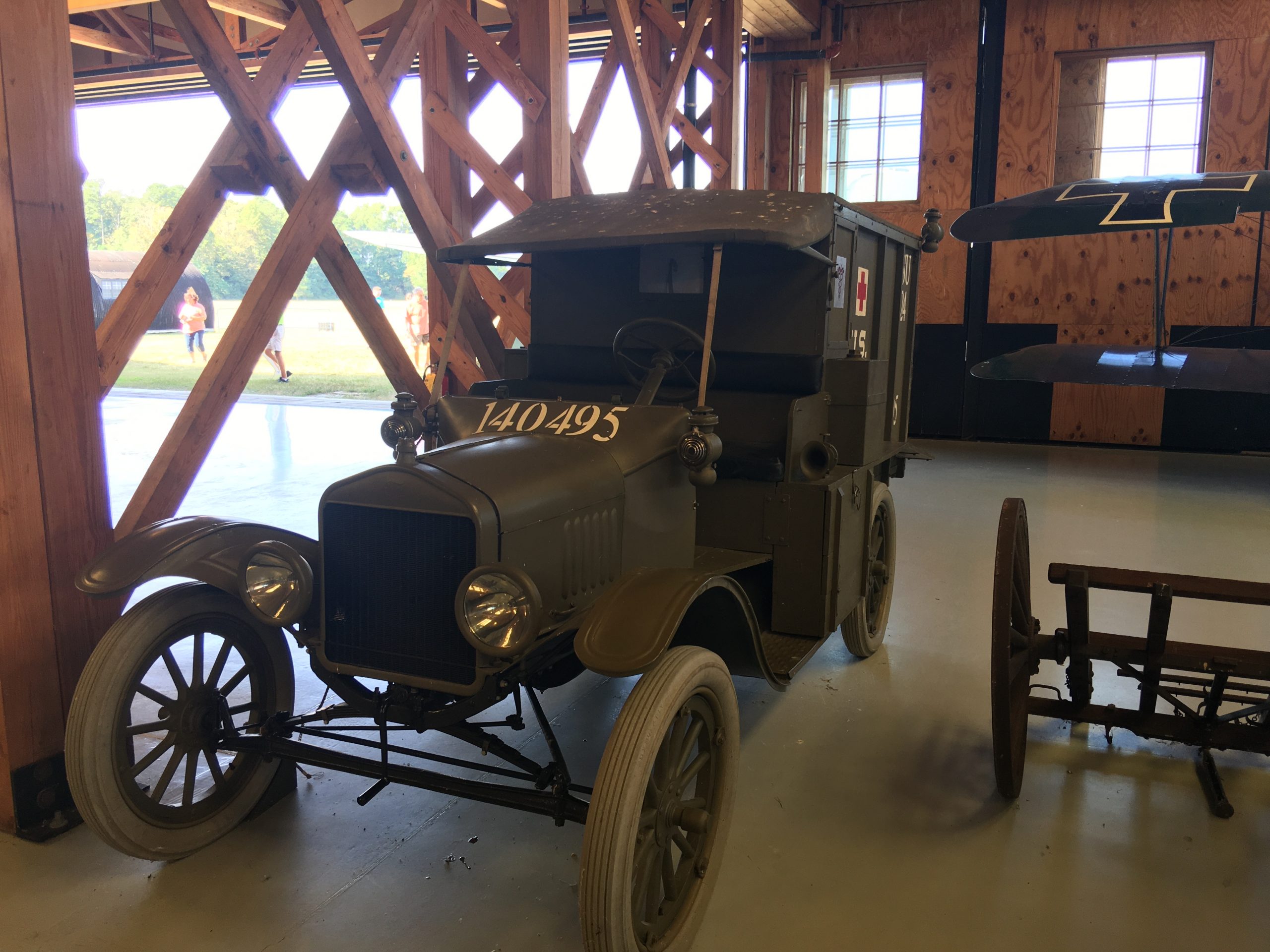
This is a 7/8th scale replica of a Spad XIII. I am truly mystified why someone would build a 7/8th’s scale replica. This is actually a flying model. See this link: https://militaryaviationmuseum.org/aircraft/wwi-aircraft/


Warbirds Over the Beach Airshow 6 (Fokkers)
In early October I spent the weekend in Virginia Beach at the “Warbirds Over the Beach” airshow. This sixth post on the air show include some more Great War airplane pictures that I took, and a few other pictures.
Fokker became famous during the Great War. In addition to inventing the first working synchronized machinegun, he also built a few nice planes. The first famous one was the Fokker Eindecker (E.I, E.II, E.III and two gunned E.IV, etc.), which was basically a French Morane Saulnier G with a metal frame and a Oberursel U.I. 9-cylinder rotary engine with 100 horsepower. This was a license built copy of the French Gnome Delta. The Morane Saulner G also used a Gnome engine (80 horsepower version). Below is a picture of replica of a Fokker E.III:

The next famous Fokker, and arguably the most famous, is the Fokker DR.1 triplane. All Great War airshows seem to have one of these. This show had two. It was the plane that Baron Manfred von Richthofen (“The Bloody Red Baron”) scored his last 17 kills with and was shot down in.



And then there was the Fokker VII. There were two copies in the museum, but none flying that weekend.
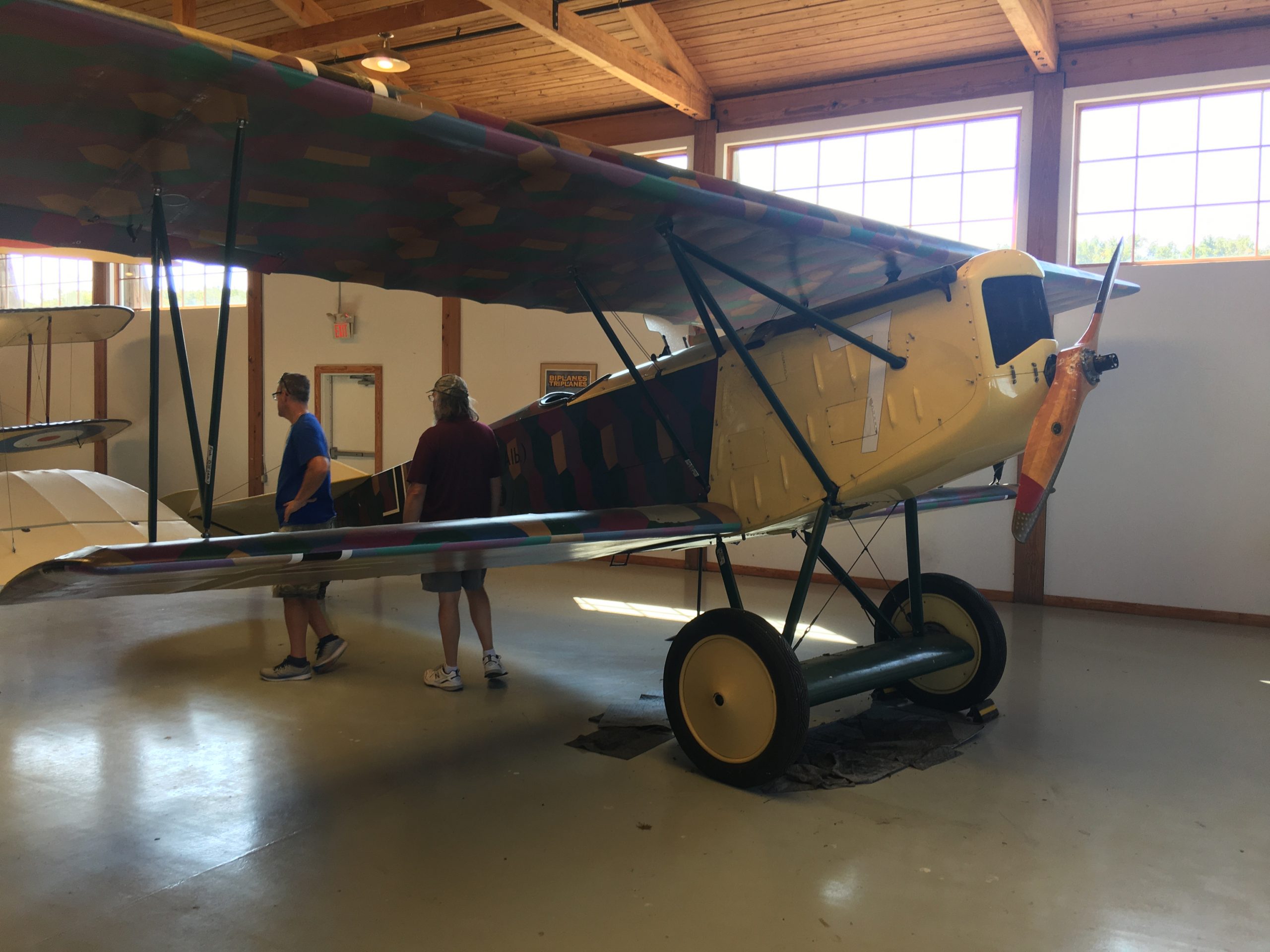
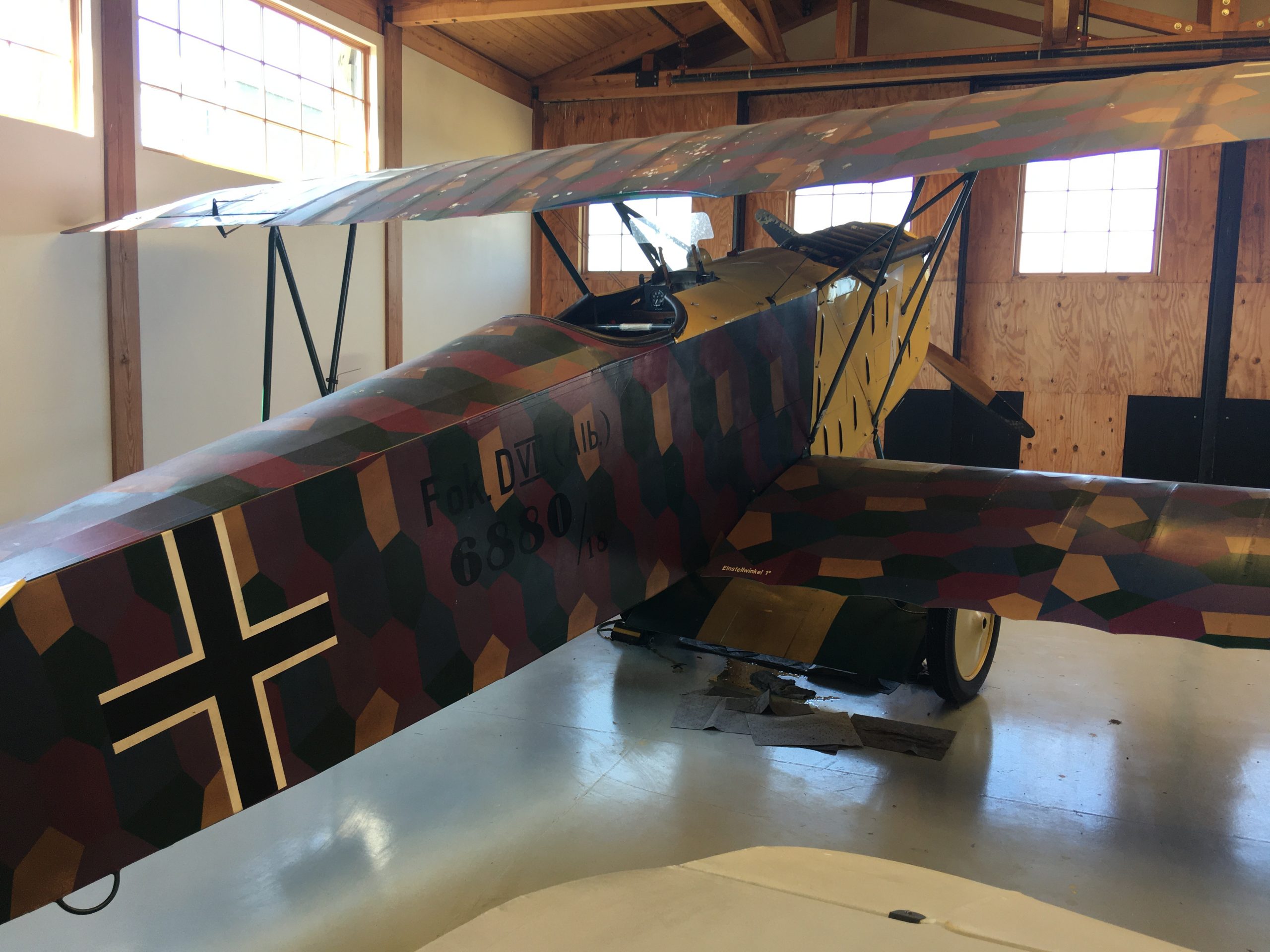
Note: As indicated in the side markings, this Fokker DVII was built by Albatross. Below is a Fokker built by Fokker.

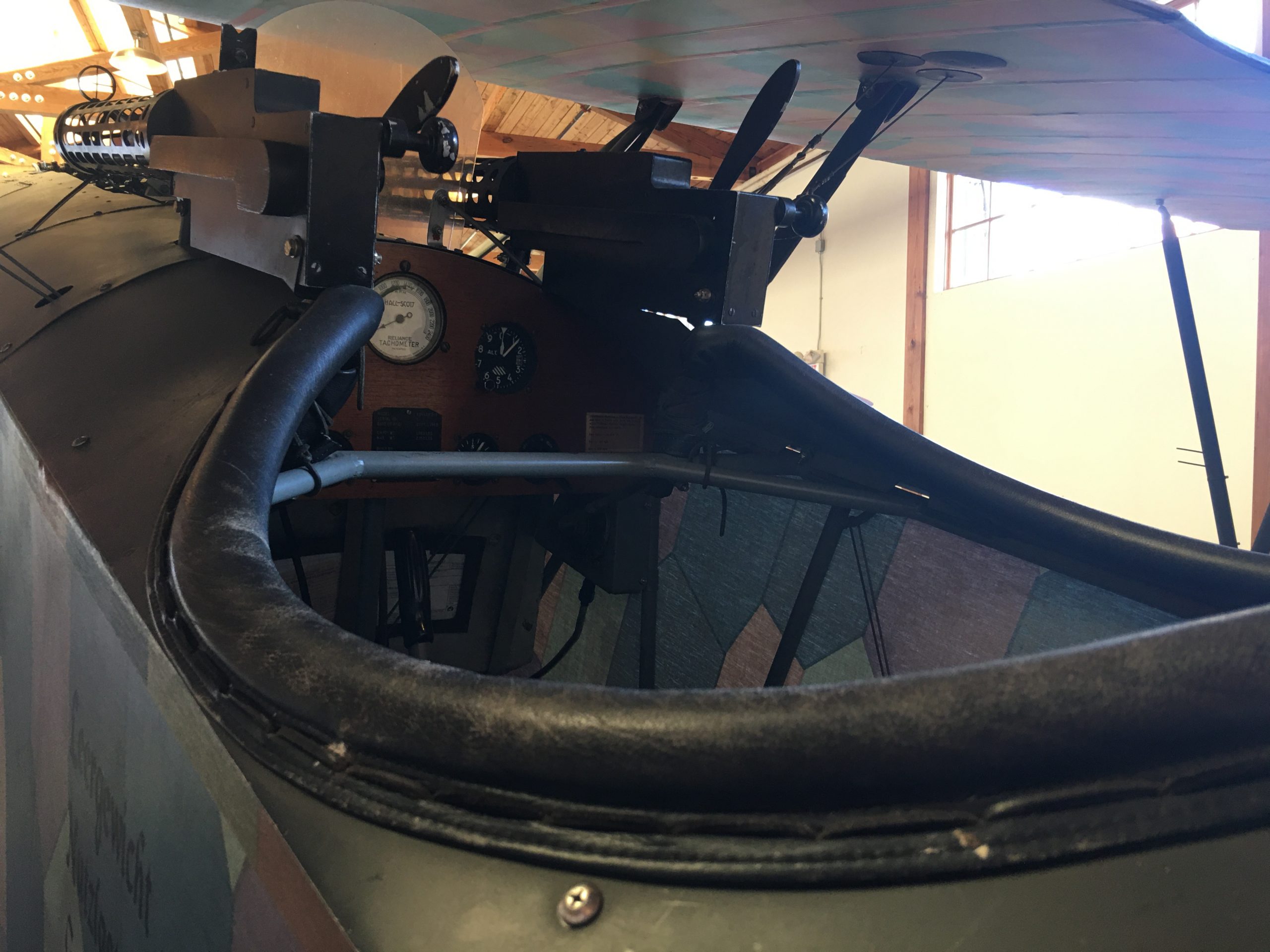
And then there was the Fokker D.VIII, back to using a single wing after using three and then two.



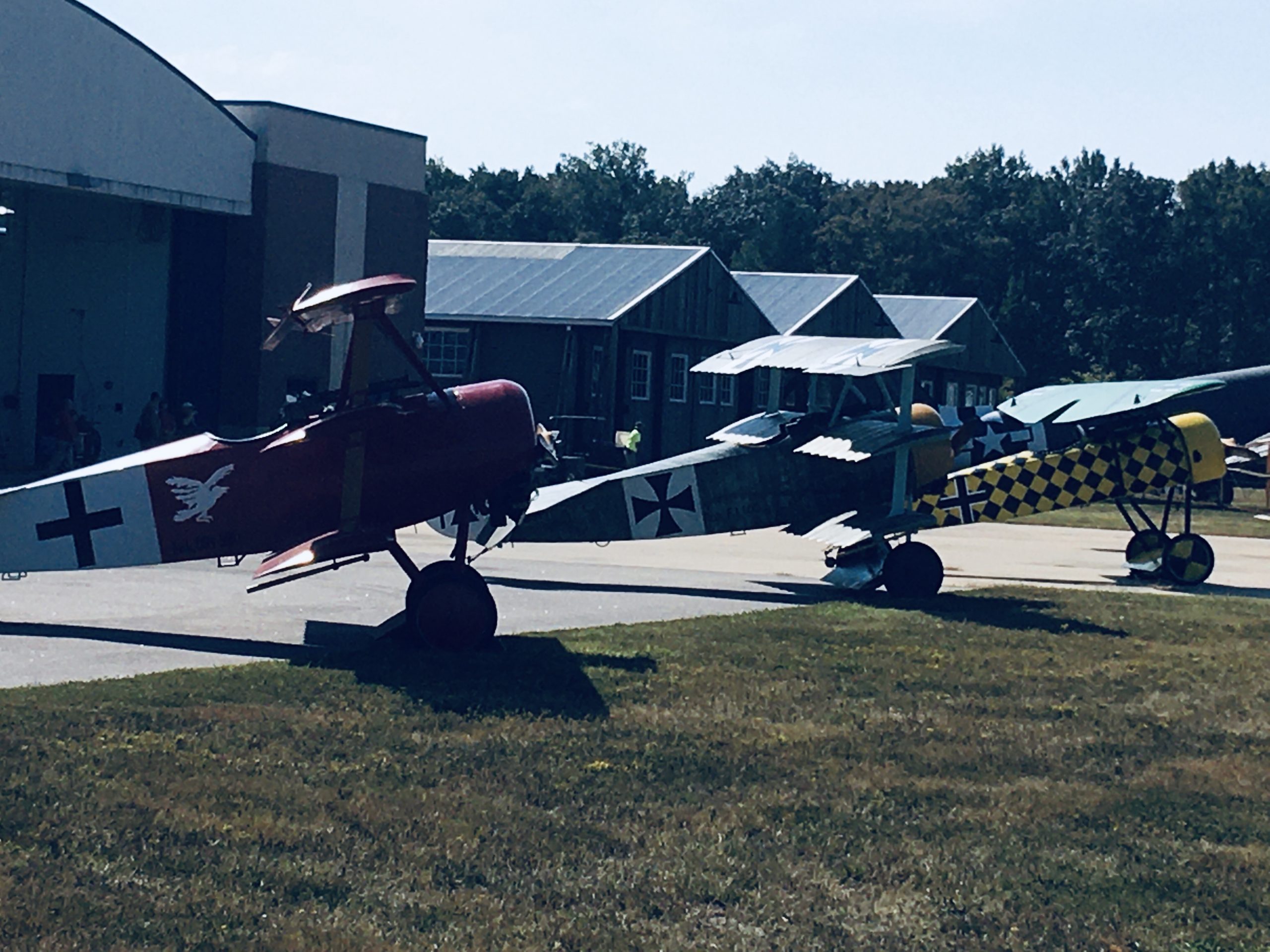
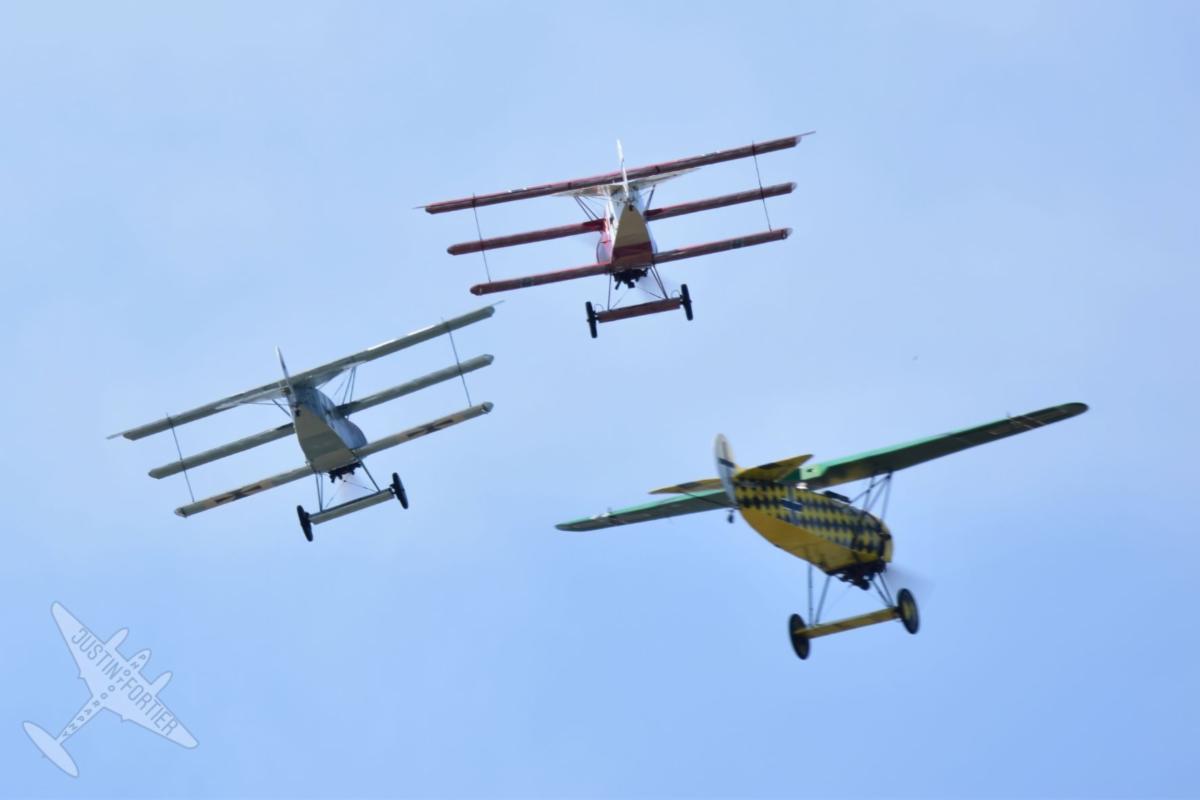
Anthony Fokker was Dutch, not German. After the war he moved back to Holland and then to America. He passed away in New York City in 1939 at the age of 49. This was one of his famous post-Great War planes:

This plane made the first ever trans-Pacific flight from mainland United States (Oakland, CA) to Brisbane, Australia in 1928. It was a distance of 7,250 miles (11,670 kilometers). It did stop at Hawaii and Fiji along the way. The crew was two Australian pilots and two Americans, a navigator and a radio operator.
Warbirds Over the Beach Airshow 5 (Halberstadt CL IV)
In early October I spent the weekend in Virginia Beach at the “Warbirds Over the Beach” airshow. This fifth post on the air show include some more Great War airplane pictures that I took, and a few other pictures.
This is a Halberstadt CL IV. This was a late war plane introduced in 1918. Mercedes 6-cylinder water-cooled in-line piston engine of 160 horsepower. Some 700 were ordered. Two forward firing fixed machineguns (LMG 08/15 “Spandau”), one ring mounted machinegun (Parabellum MG 14) for the observer.
This version is a replica and it does differ from the original in a number of areas.

Of interest is the rear mounted machinegun on an circular ring mount. This was something the Germans were doing but the allies were not. This does appear to be a precise recreation of the ring mount.

The exterior radiators do not appear to be “standard issue.” Probably a modern addition. Below is a picture of a CL IV in the National Museum of the United States Air Force.
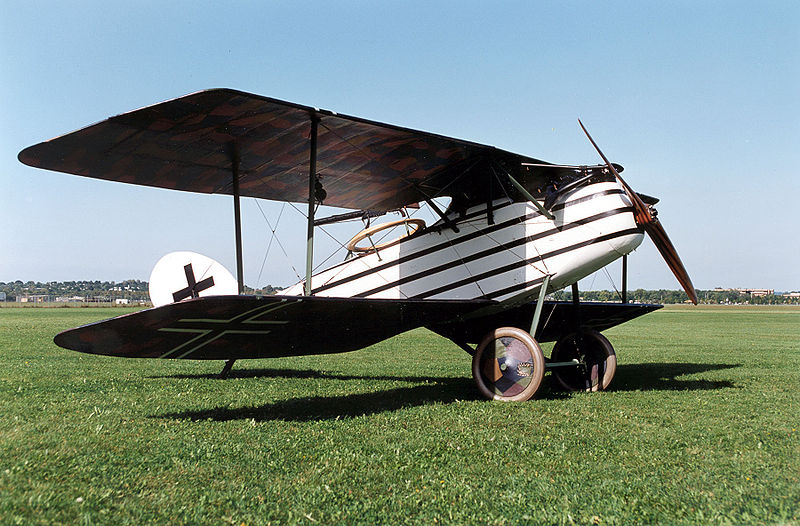

I do not think the high back seat is “original issue.”
And the cockpit. The windscreen is a modern addition. These airplanes did not have such a windscreen. Not sure how much of this cockpit is authentic.

A look from above with another museum piece. Note that ring mount is fundamentally different.
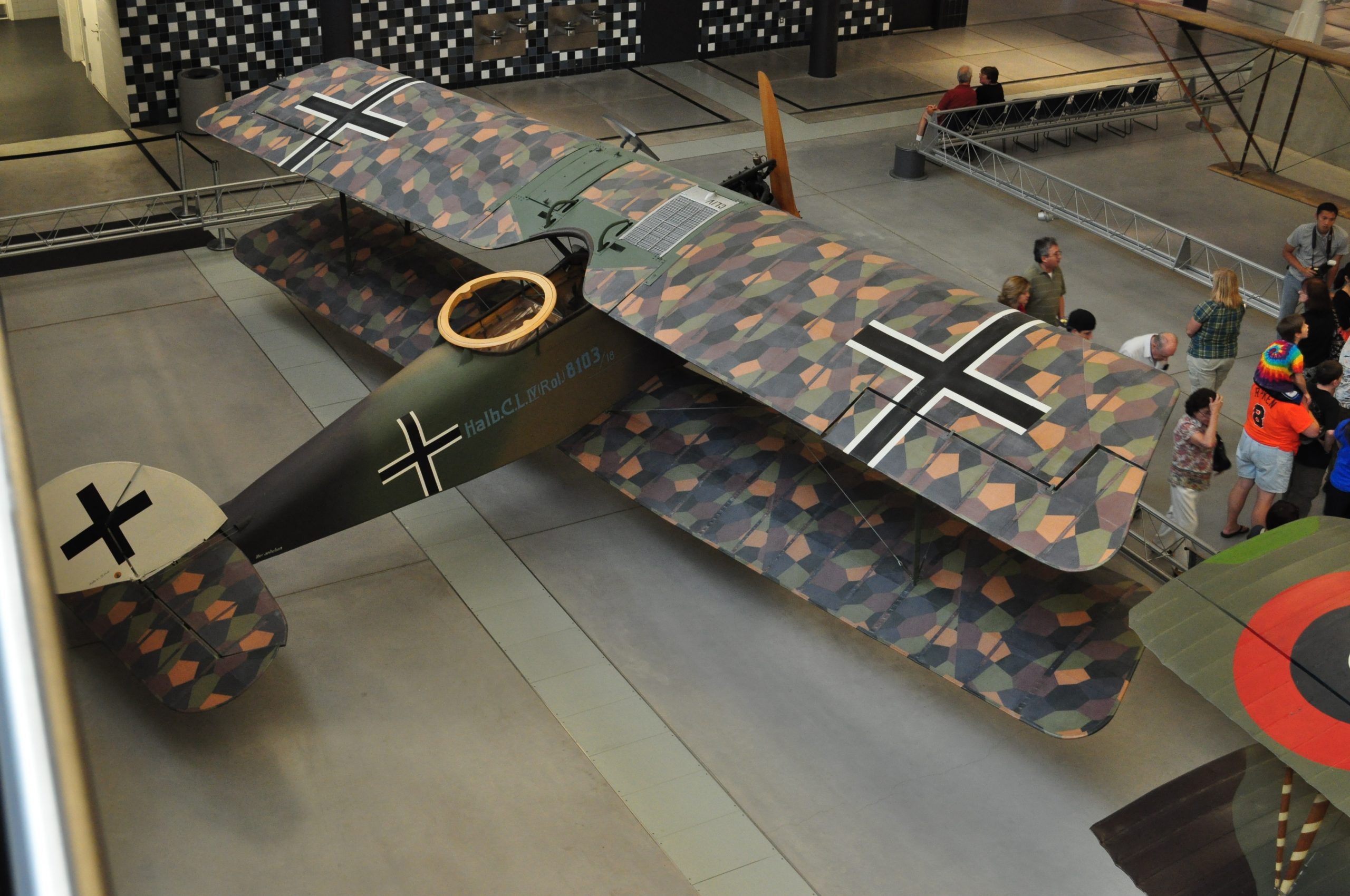
Plane is at the Steven F. Udvar-Hazy Center of the Smithsonian National Air and Space Museum
So this version in Virginia Beach does not appear to be a perfect reproduction, but it does fly.

Halberstadt CL.IV Takeoff – YouTube
And a Great War era picture:

For comparison, I have added a picture of the machinegun mount of a Sopwith 1 1/2 Stutter to the post on that plane.